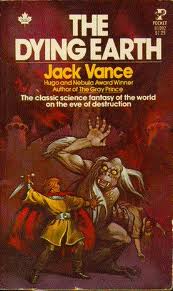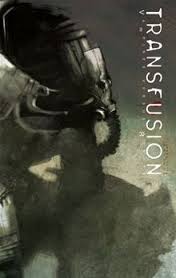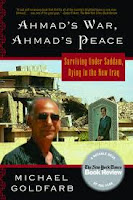 Walter Mosley left Easy
Rawlins for dead at the end of his last novel, but Little Green opens
with Easy coming back from the dead, reviving from a coma and into
the land of the living. It was Mouse who, prompted by the sixth sense
of Mama Jo's juju, found and saved Easy, and now Mouse, the deadly
Raymond Alexander, has something he wants Easy to do for him in
return, namely locate a young boy named Evander who's gone missing on
Sunset Strip, and whose mother is worried sick. But Timbale, the
mother, despises Mouse, and would neither ask for nor accept his
help. So Easy stumbles out of the sick bed and back into the land of
the living, fuelled by Mama Jo's gator juice, a brew that appears to
turn him into something like a super hero, at least for brief periods
of time.
Walter Mosley left Easy
Rawlins for dead at the end of his last novel, but Little Green opens
with Easy coming back from the dead, reviving from a coma and into
the land of the living. It was Mouse who, prompted by the sixth sense
of Mama Jo's juju, found and saved Easy, and now Mouse, the deadly
Raymond Alexander, has something he wants Easy to do for him in
return, namely locate a young boy named Evander who's gone missing on
Sunset Strip, and whose mother is worried sick. But Timbale, the
mother, despises Mouse, and would neither ask for nor accept his
help. So Easy stumbles out of the sick bed and back into the land of
the living, fuelled by Mama Jo's gator juice, a brew that appears to
turn him into something like a super hero, at least for brief periods
of time.
That's some set up, and
this novel serves to remind readers like me, who may have drifted
away from Mosley's work, feeling it had lost some of the urgency
which made it so effective when Easy first came on the scene, of
exactly how good Mosley can be when he is on. It's 1967, and Easy is
in his mid-40s. Los Angeles has been hit by the counter-culture;
Evander disappeared on a trip, taken almost on a dare, to see the
hippies on Sunset Strip. This heralds a new age, of sorts, new
attitudes whose depth remains to be challenged. Because this is also
Los Angeles still feeling the aftermath of the Watts riots,and it
here where Mosley is so good, because there are two different
perspectives to the Sixties, black and white, and through Easy we are
reminded of how they differ.
In that sense, Mosley
often reminds me most of the documentary film maker Ken Burns, whose
major projects, on the Civil War, on baseball, and on jazz, have all
actually been about the centrality of race in the American
experience, and that is Mosley's theme as well. The mystery at the
heart of his first novel, Devil In A Blue Dress, whose backstory
comes up in Little Green, was one of racial identity, and he revisits
that powerfully here. What Easy has always done, for the reader, is
to mix the values American society purports to cherish, especially
those of family and education, and which Easy shares, with the
reality of how hard it is to actually draw the benefits of such
values in a racist society. Surviving in Easy's America means being
part Easy and part Mouse, and even in the Sixties, with some
attitudes changing, there are many more that are not. Indeed, you might argue that Mosley's best novels have all been concerned with sociological history, and in that sense he's probably closer to Ross MacDonald than any of the other great LA crime writers.
I like the way Mosley
has taken his characters through post-war LA, like a much less
apocalyptic Ellroy, or like Max Allen Collins' Nate Heller without
the big events of history. In fact, Heller and Easy would make an
interesting partnership around, say, the RFK assassination or the
Hearst kidnapping and the SLA. Just a thought. He's also aware of his own place in detective fiction, at least by proxy. There's an interesting exposition on the importance of Chester Himes,and his being more important than Ralph Ellison, for the precise reason that he was more productive; Invisible Man, perhaps unfairly, gets seen as the book white literature accepted partly because it was a 'one-off'. You can't help but think Mosley is talking about himself when he talks about Himes.
Anyway, Evander's been
given LSD by a friendly hippie, and he's become a literally unknowing
accomplice to the rip-off of some big time drug dealers—the drug
being pot in this case, underscoring the dark side beneath the groovy
vibe of the Strip. As Easy returns to life, bit by bit with the help
of Mama Jo's gator blood, he reassembles his family, and he even
reunites with Bonnie, the love he thought lost forever. Which doesn't
prevent his getting his first experience of the free love era. Free
love would not faze a black man in Los Angeles, not as much as the
lack of racial barrier. But barriers are starting to fall, which is
something Mosley approaches with commendable caution. For Easy, it's
simply good to have been 'recalled to life', as the phrase once went.
Little Green by Walter
Mosley
Weidenfeld &
Nicholson/Orion £18.99 ISBN 9780297870067
Note: This review will also appear at Crime Time (www.crimetime.co.uk)










